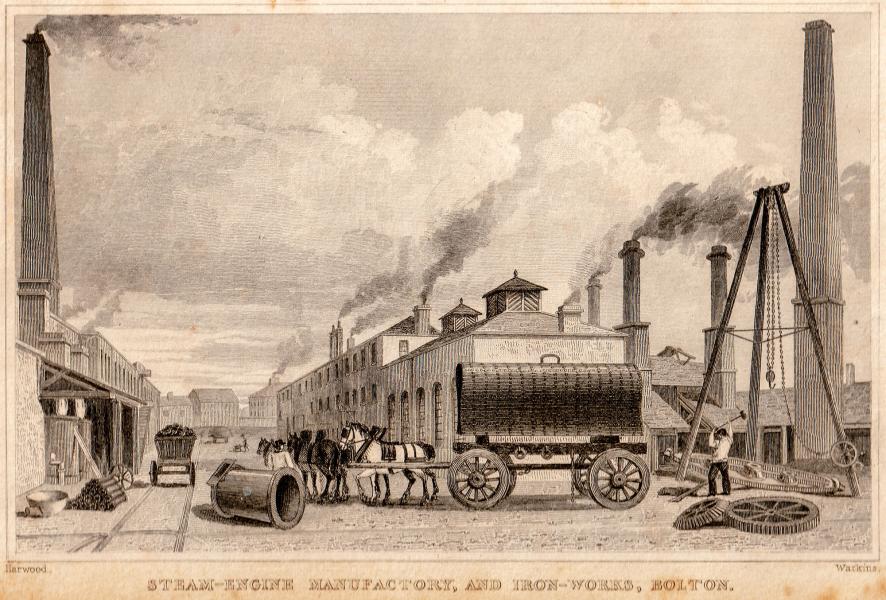Sheffield Silver Plate
Today, an odd story about steam engines and silver plate. The University of Houston's College of Engineering presents this series about the machines that make our civilization run, and the people whose ingenuity created them.
Here's a stunning painting, made in 1814 by George Clint. It shows the grandeur of a huge English banquet hall. Hundreds of lords and ladies sit with the prince regent and the emperor of Russia. Settings of Sheffield silver march up and down the tables.
Sheffield silver plate came into being in 1742 when a silversmith found that clean, smooth, blocks of copper and silver would bond when he pressed them together. He sandwiched copper between two silver slabs -- then ran them through rollers, over and over. The result was silver outside a strong copper core.
In 1762, 24-year-old Matthew Boulton set up a factory in Birmingham, England. He began making silver-plated objects with the Sheffield process. Boulton became the first really large producer of Sheffield plate. And, when silversmiths raised legal objections to stamping hallmarks on the stuff, Boulton led a movement to require separate standards for Sheffield silver.
But Sheffield plate couldn't last. In 1800, a chemist found that an electric current would transfer silver to metal in a bath. By 1840, electroplating had been patented, and it could be used it to lay down any desired thickness of silver. It took none of the craftsmanship needed in the Sheffield process.
After that, Sheffield plate became a collectors' cult item in the late 19th century. Forgers would try to make electroplated copper ware look like Sheffield silver. Experts would try to tell the difference. They couldn't always do so.
The Sheffield copper/silver sandwich had edges that had to be hidden, usually with strips of soldered decoration. The imitators used decoration to hide copper that wasn't really exposed. Sheffield also had a slightly different hue. Still, after 1850, all new silverware was either solid or electroplated.
But there's more to Matthew Boulton's story. In 1768, when his silver works was only six years old, he met young James Watt. Watt was in trouble. His new steam engine wasn't running, and his patron was going bankrupt. Boulton knew talent when he saw it, and he bailed Watt out in exchange for rights to produce the engine. In 1776, Watt moved to Birmingham. The two of them went full-time into the steam engine business, and the world has not been the same since.
And my eyes wander back to that picture. It shows the old order of empire -- an order that would begin unraveling in the wake of political and industrial revolution. They feast off Sheffield plate, but they face extinction at the hands of the new steam engines. Matthew Boulton died five years before this picture was painted. But, his ghost is here -- looming large.
I'm John Lienhard, at the University of Houston, where we're interested in the way inventive minds work.
(Theme music)
Hughes, G.B., Sheffield Silver Plate. New York: Praeger Publishers, 1970.
See also Encyclopaedia Britannica entries under Boulton and Sheffield. (The older Britannicas give more detailed coverage to Sheffield plate than do the later ones.) I am grateful to Roger Eichhorn, Dean of Engineering at UH, for suggesting the topic and providing the Hughes source.

Boulton-Watt Works as shown in a 19th-Century Engraving, Source Unknown